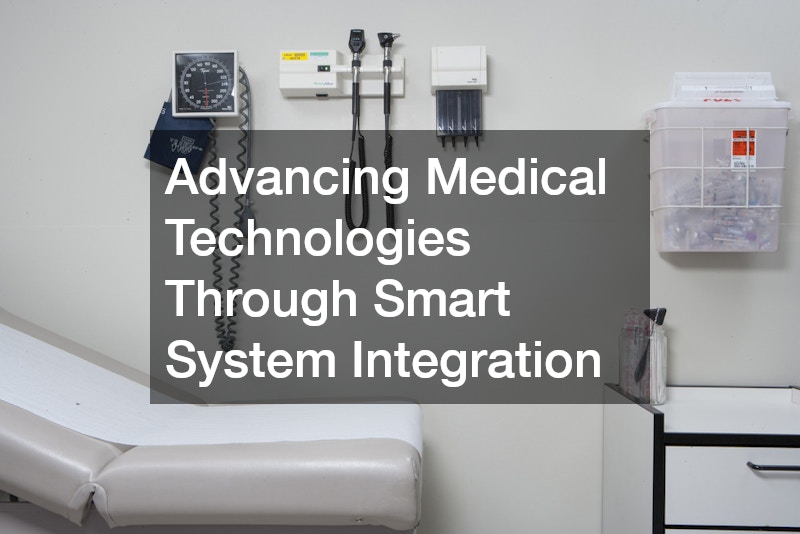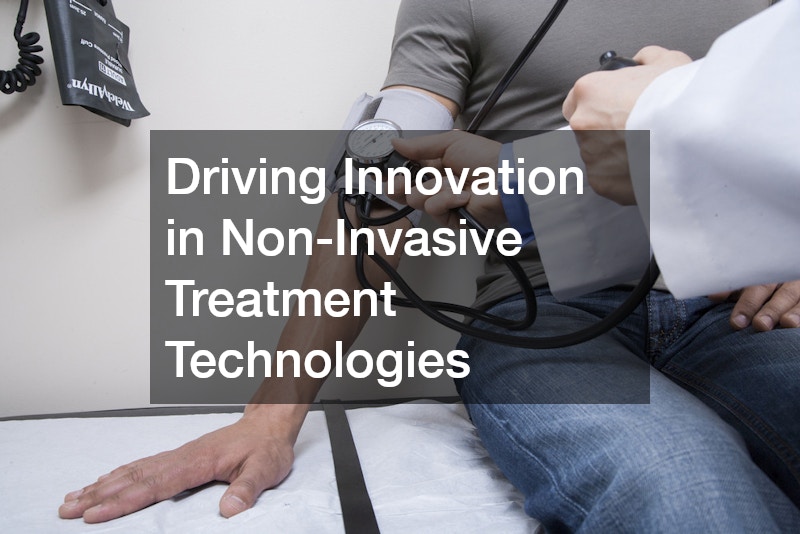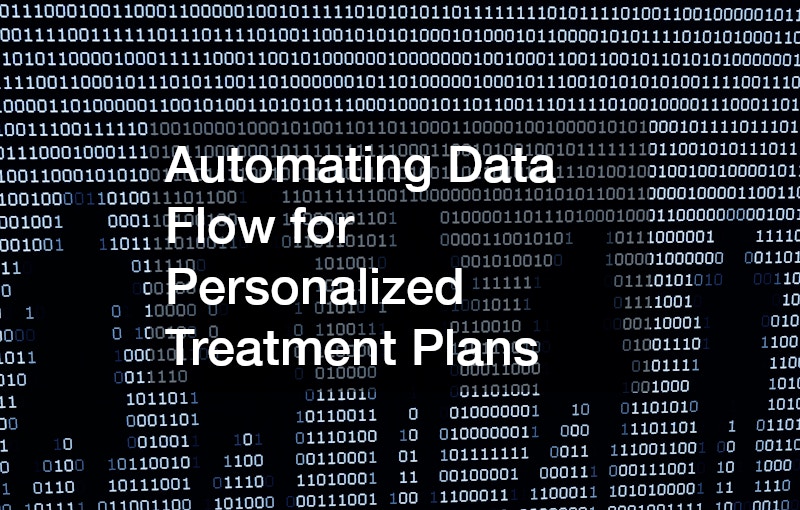
In today’s rapidly evolving medical landscape, the integration of smart systems into healthcare technology is not just beneficial but essential. The fusion of industrial coding with advanced medical devices has revolutionized the way care is delivered, offering better patient outcomes and streamlined operations. From robotic surgical instruments to smart monitoring systems, the synergy of hardware and software is paving the way for future advancements in medicine.
Advancing Medical Technologies Through Smart System Integration

As healthcare continues to evolve, the need for seamless integration of various technologies cannot be overstated. Smart system integration plays a crucial role in connecting devices, applications, and services across healthcare ecosystems. By leveraging industrial coding, healthcare providers can develop customized solutions that improve efficiency, patient care, and data management.
One of the key advantages of this integration is the ability to collate patient data from multiple sources, allowing for more informed decision-making. For instance, data from a walk-in clinic, combined with information from orthodontic consultants and fertility lawyers, creates a holistic view of a patient’s health journey. This comprehensive data stream can be enhanced through intelligent software systems that automate processes and ensure compliance with regulatory standards.
Moreover, integrating cutting-edge technologies like digital radios and local red light therapy systems can address patient needs more effectively. This marriage of technology and healthcare leads to better patient experience as their treatment becomes more personalized and responsive to their unique requirements. Ultimately, the continuous evolution in this space hinges on advancing the craft of industrial coding to maintain the pace of innovation.
Streamlining Regulatory Compliance With Custom Software Solutions
Regulatory compliance is a critical aspect of the healthcare sector, necessitating adherence to stringent guidelines and standards. Custom software solutions can significantly ease the burden of compliance by automating many of the processes involved. Through the use of efficient industrial coding, healthcare providers can ensure that their operations are aligned with regulatory expectations without compromising their focus on patient care.
For example, medical facilities can automate documentation and reporting processes, which traditionally consume considerable time and resources. This is particularly relevant for sectors like plastic surgery, where meticulous paperwork is often required to conform with health regulations. By streamlining these processes, healthcare practitioners can focus more on providing immediate care to their patients, thus enhancing service delivery.
Furthermore, custom software can assist in keeping up with evolving regulations across different states and countries. This adaptability is essential for organizations that operate in diverse regions and cater to a wide range of specialties, such as chiropractic care and aesthetic medicine. By leveraging these smart solutions, healthcare providers can minimize risks and ensure their practices remain compliant with the latest standards.
Enhancing Patient Experience With Intelligent Device Connectivity
Intelligent device connectivity is paramount when it comes to enhancing the patient experience. By integrating various medical devices through industrial coding frameworks, healthcare providers can create a seamless flow of information. This connectivity allows for real-time tracking of vital signs, patient history, and treatment updates, ensuring individuals receive timely interventions.
When patients can access their health data through connected devices, they feel more empowered regarding their care. This is especially crucial in scenarios like managing chronic conditions or preparing for procedures, such as receiving Botox or undergoing a surgical operation. Through connected systems, patients can access up-to-date information, fostering a sense of involvement in their health journeys.
Moreover, this level of integration enhances communication between patients and healthcare providers. With sophisticated industrial coding in place, appointment scheduling, medication reminders, and follow-up procedures become more efficient. As a result, the overall patient experience is improved, leading to greater satisfaction and better health outcomes.
Supporting Rapid Prototyping in Health and Wellness Sectors

The healthcare landscape is increasingly characterized by a demand for innovation, necessitating rapid prototyping to bring new ideas to life. This is particularly true in the health and wellness sectors, where understanding user needs quickly can lead to better products and services. By utilizing advanced industrial coding practices, developers can prototype solutions that meet the unique demands of healthcare professionals and patients alike.
Prototyping allows healthcare organizations to test new technologies and validate their effectiveness in real-world situations. For instance, a prototype for a new digital platform for managing outpatient treatment could integrate local red light therapy resources or skin adhesive products effectively. Rapid feedback loops facilitate improvements, ensuring technology evolves in sync with user needs.
Furthermore, this approach fosters collaboration among interdisciplinary teams, combining insights from medical professionals, technical experts, and even patients themselves. Their collective input can lead to innovative solutions that enhance the delivery of care across various specialties, including orthodontic and cosmetic practices. By harnessing the power of industrial coding in prototyping, the healthcare sector can continue to adapt and improve workflows.
Improving Aesthetic Equipment Precision With Automated Code
In the realm of aesthetic medicine, the precision of equipment is of utmost importance. When performing delicate procedures, such as cosmetic surgery or botox treatments, any error can have significant repercussions on patient satisfaction. Automated coding in aesthetic equipment helps ensure each device operates with the required accuracy, enhancing the overall effectiveness of treatments.
Automation through industrial coding eliminates human error in device calibration and function. For example, automated controls can adjust the settings of laser systems or injectors in real-time based on patient feedback. This focus on precision not only improves patient outcomes but also increases trust in aesthetic practices, encouraging more individuals to seek cosmetic enhancements.
Additionally, the integration of automated systems reduces the burden on healthcare professionals, allowing them to focus on more complex aspects of patient care. By streamlining operational tasks, such as equipment maintenance and calibration checks, clinics can operate more effectively. Therefore, advanced coding practices directly impact the quality of aesthetic treatments offered in today’s competitive market.
Enabling Real-Time Monitoring in Outpatient Treatment Centers
Real-time monitoring is crucial for improving patient care, especially in outpatient treatment centers where patients are typically not under constant clinical supervision. Utilizing industrial coding within monitoring systems allows for instantaneous data collection and analysis, enabling healthcare providers to react swiftly to any changes in a patient’s condition. This accessibility to live data helps in making informed medical decisions and reduces complications in patient management. Which, can be tricky when trying to determine the average cost for a surrogate.
For example, wearable devices can continuously track heart rate, oxygen levels, and other vital signs, sending data directly to medical staff. When these devices are connected to a centralized system via smart technologies, health care providers can monitor patients remotely. This capability is especially advantageous for individuals receiving chiropractic care or recovering from outpatient procedures, as it provides peace of mind both to patients and their families.
Moreover, real-time monitoring systems improve communication among interdisciplinary teams. By having real-time access to patient metrics, healthcare providers in fields ranging from fertility services to plastic surgery can collaborate effectively on treatment plans. This integrated approach not only boosts patient safety but also ensures more cohesive and personalized healthcare delivery.
Driving Innovation in Non-Invasive Treatment Technologies

The landscape of healthcare is shifting toward non-invasive treatment technologies, which often yield fewer complications and faster recovery times. Innovations in fields such as dermatology and pain management are paving the way for patients seeking alternatives to traditional surgical interventions. These advancements rely heavily on robust industrial coding frameworks to integrate various technologies seamlessly.
For instance, local red light therapy has emerged as a popular non-invasive option for skin rejuvenation and healing. By utilizing advanced coding techniques, medical practitioners can harness the power of this technology, allowing for precise treatment settings adjusted on-the-fly based on patient response. Such innovations contribute significantly to enhancing the patient experience as they navigate their healthcare options.
Furthermore, 3D printing technologies and automated coding can work together to create customized solutions for non-invasive treatments. From tailored braces for orthodontic patients to specialized skin adhesives for cosmetic applications, these technologies enhance treatment personalization. By continuously driving innovation in non-invasive methods, the healthcare sector can offer more efficient care while meeting diverse patient needs.
Simplifying Complex Legal Documentation Through Automation
Legal documentation in healthcare can often be complex and time-consuming, requiring meticulous attention to detail. However, automation software that employs industrial coding can greatly simplify this process, ensuring compliance and efficiency. With automated systems, healthcare providers can streamline the creation, management, and storage of essential legal documents.
This simplification is particularly relevant in areas that involve sensitive topics, such as fertility treatments or elective surgeries that require patient consent. Automated legal frameworks ensure that all documentation adheres to current laws and regulations, minimizing the risk of errors and inconsistencies. As a result, healthcare organizations can focus more on patient care rather than administrative tasks.
Moreover, this automation fosters transparency between providers and patients, instilling confidence and trust. When legal processes are streamlined, patients feel more informed and engaged in their treatment choices. Consequently, automated legal documentation becomes an essential tool in providing outstanding patient care and upholding regulatory compliance.
Redefining User Interfaces in Health-Focused Digital Products
User interfaces play a crucial role in the effectiveness and usability of health-focused digital products. In an environment where doctors, patients, and caretakers interact, a well-designed interface enhances usability and fosters better communication. Industrial coding greatly contributes to creating intuitive interfaces that invite user interaction while ensuring functionality.
For instance, applications for managing outpatient treatment schedules or tracking cosmetic procedures must possess an intuitive design that speeds up workflows. When users can easily navigate through different functionalities, essential information becomes readily accessible. This ease-of-use significantly improves the likelihood of users engaging with the software regularly, leading to enhanced treatment adherence and better health outcomes.
Additionally, a responsive user interface on mobile platforms encourages patients to take charge of their health. By providing easy access to personal health metrics, appointment scheduling, and educational resources, patients are empowered to make informed decisions. Therefore, redefining user interfaces is a vital step toward improving healthcare delivery through technology.
Powering Diagnostic Tools With Seamless Software Integration
Diagnostic tools are at the forefront of patient care, leaning heavily on the power of technology for accurate assessments and timely interventions. Seamless software integration enhances the capabilities of these tools, ensuring real-time processing and analysis of data. Industrial coding serves as the backbone for creating robust systems that streamline the input and output of diagnostic information.
With integrated software solutions, healthcare providers can access essential diagnostic data instantaneously, allowing for quicker clinical decision-making. This speed is particularly crucial in time-sensitive situations where timely interventions can significantly affect patient outcomes. The integration of various devices and software creates a cohesive network where diagnostic tools operate more effectively.
Moreover, improved diagnostic capabilities reduce the need for invasive procedures and allow for more accurate, non-invasive assessments. By harnessing the power of industrial coding to enhance diagnostic tools, healthcare providers can offer better, more efficient services. As a result, patients experience fewer delays and increased confidence in their treatment plans.
Automating Data Flow for Personalized Treatment Plans

Personalized treatment plans have become a hallmark of modern healthcare, driven by advancements in technology and data management. Automating data flow between various systems allows healthcare professionals to develop tailored care plans that align with individual patient needs. This automation is heavily reliant on industrial coding that connects disparate systems effectively.
For instance, patient records, genetic data, and treatment responses can be synchronized to create a comprehensive view of a patient’s health status. By automating the flow of this information, practitioners can adjust treatment plans dynamically based on real-time results and feedback. Such personalized approaches lead to improved outcomes and higher patient satisfaction rates.
Additionally, automation reduces the risk of errors commonly associated with manual data entry and streamlines the management of complex patient cases. This precision not only contributes to better healthcare delivery but also enables practitioners to maximize their operational efficiency. By emphasizing the importance of industrial coding in automating data flow, the medical community can ensure that personalized care becomes the norm rather than the exception.
Facilitating Interdisciplinary Collaboration With Shared Coding Frameworks
Interdisciplinary collaboration is essential for delivering comprehensive healthcare, especially in complex cases that require input from various specialists. Shared coding frameworks enable seamless information exchange among different healthcare providers, enhancing care coordination. By harnessing industrial coding, disparate teams can access and share critical patient information efficiently.
For instance, a patient undergoing treatment for infertility might require insights from fertility lawyers, endocrinologists, and surgeons. With a shared platform, each specialist can view vital metrics and recommendations from other providers, fostering collaborative decision-making. This level of integration ensures that all aspects of a patient’s care are taken into account, leading to more holistic treatment strategies.
Moreover, the establishment of shared coding frameworks encourages innovation in collaborative treatment solutions. When different disciplines come together using a common language, they can develop creative approaches to complex health issues, such as chronic pain management or multimorbidity treatment. Thus, this collaborative mindset ultimately enhances patient experience and health outcomes.
Optimizing Communication Platforms in Modern Care Facilities
Effective communication in healthcare settings directly contributes to improved patient outcomes and operational efficiency. Modern care facilities benefit significantly from optimized communication platforms that facilitate collaboration among staff and enhance patient engagement. Utilizing industrial coding in developing these platforms allows for better integration of various communication tools.
By leveraging technology, healthcare professionals can receive real-time updates on patient status, treatment plans, and administrative tasks. This immediate communication capability ensures that everyone involved in patient care has the most current information at their fingertips. For instance, a team treating a patient after plastic surgery can coordinate effortlessly, ensuring that recovery plans are executed smoothly.
Additionally, improved communication fosters a more cohesive work environment, reducing the likelihood of errors and miscommunication. Such optimization also extends to patient interactions, where easy access to information and appointment scheduling contribute to a better overall experience. Therefore, investing in robust communication platforms is a critical component in advancing modern healthcare facilities.
Conclusion
The integration of smart systems in healthcare is rapidly changing the landscape, providing endless possibilities for improved patient care and operational efficiency. By utilizing industrial coding and automation to streamline processes, healthcare providers can enhance their ability to meet the unique needs of patients while ensuring compliance with regulations. As we continue to explore innovative solutions across various medical fields, the focus on technology-driven advancements will be pivotal in shaping the future of healthcare.





